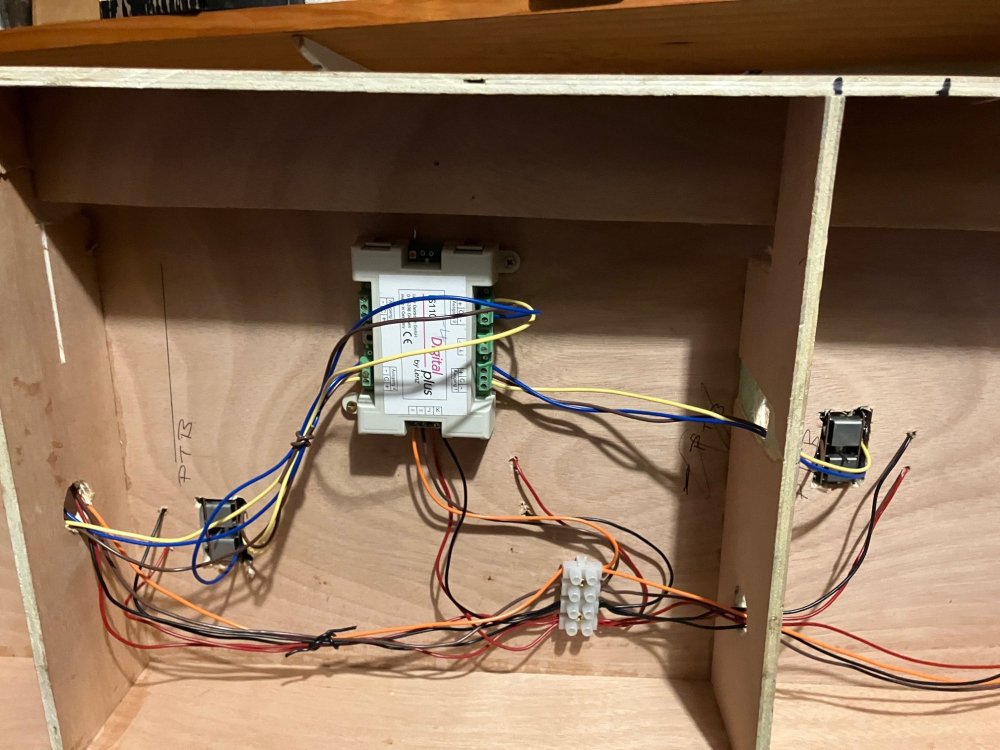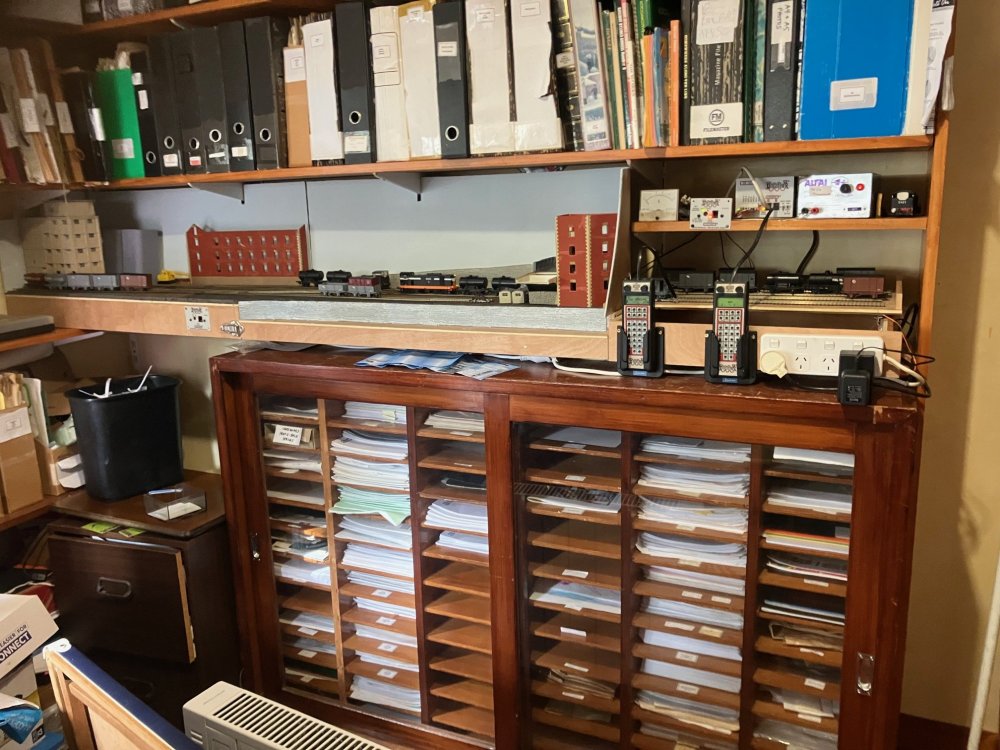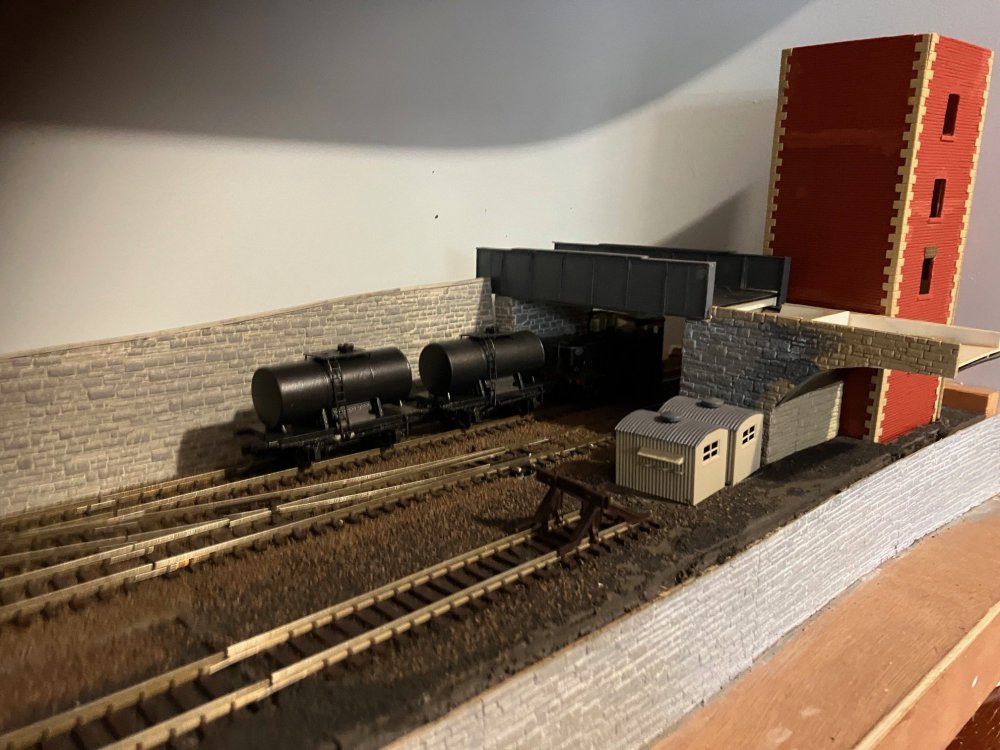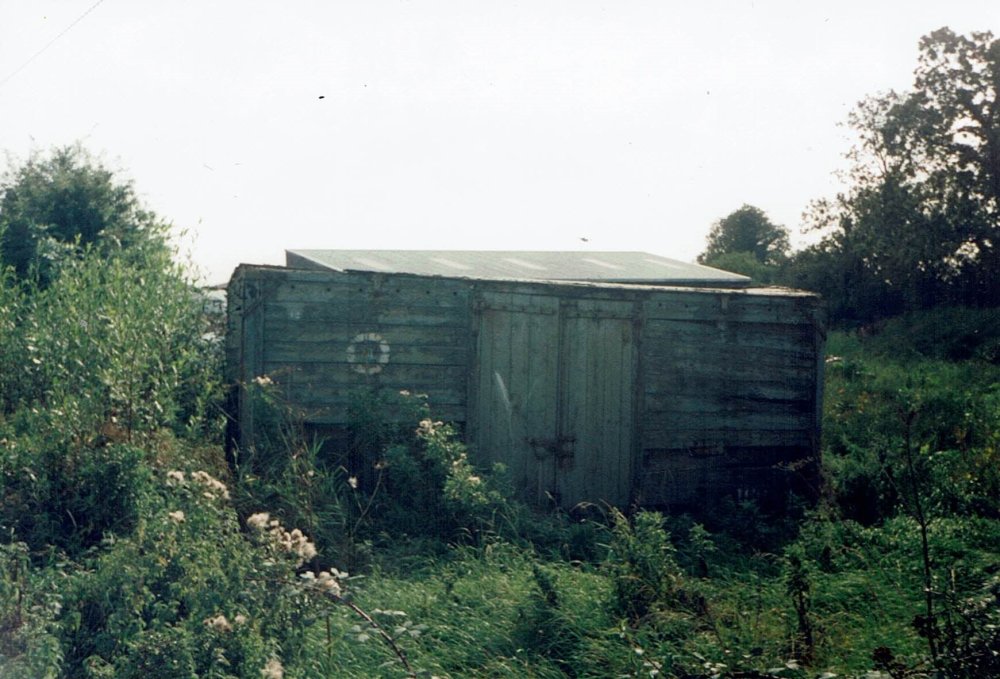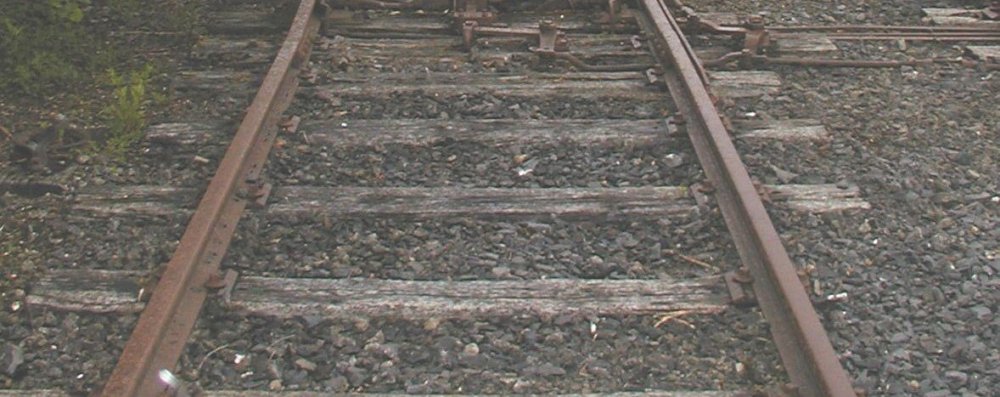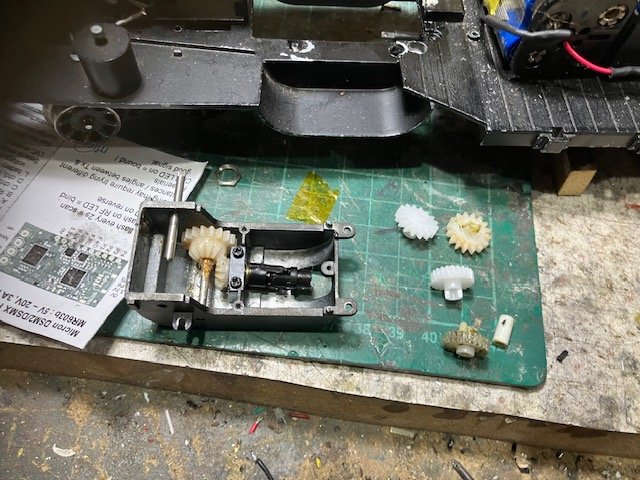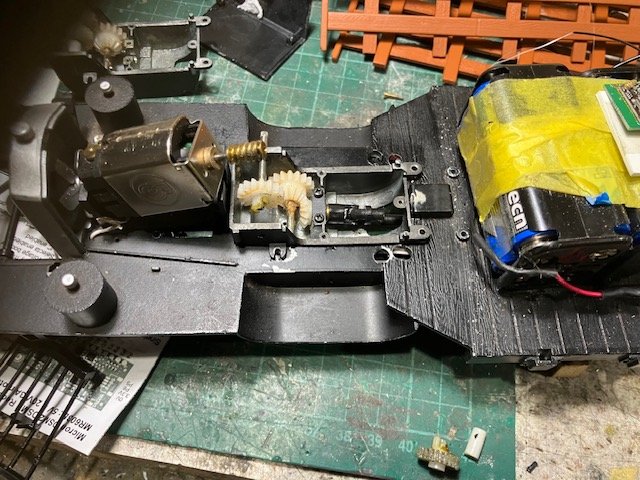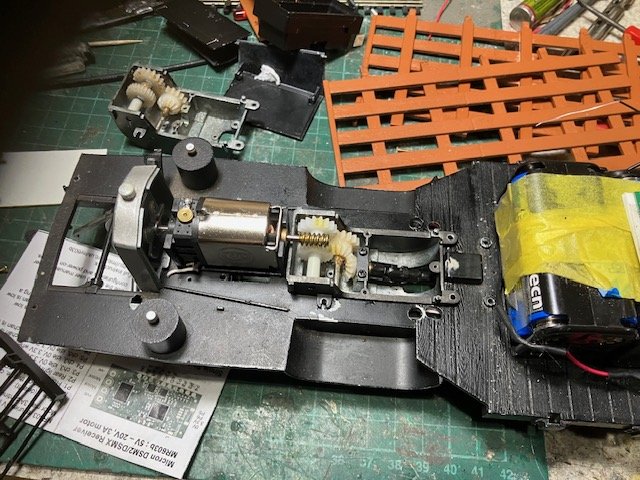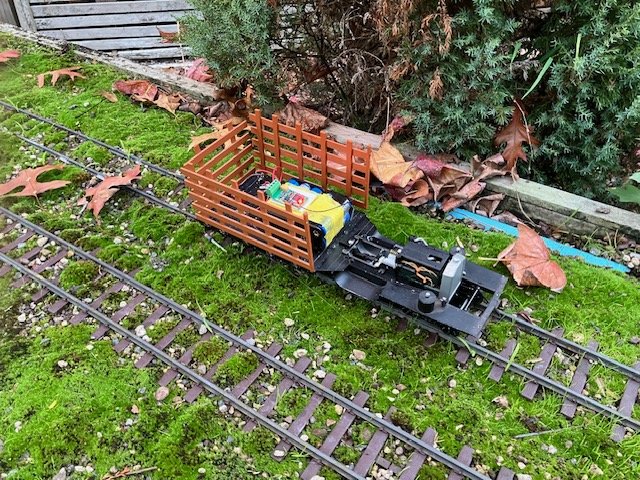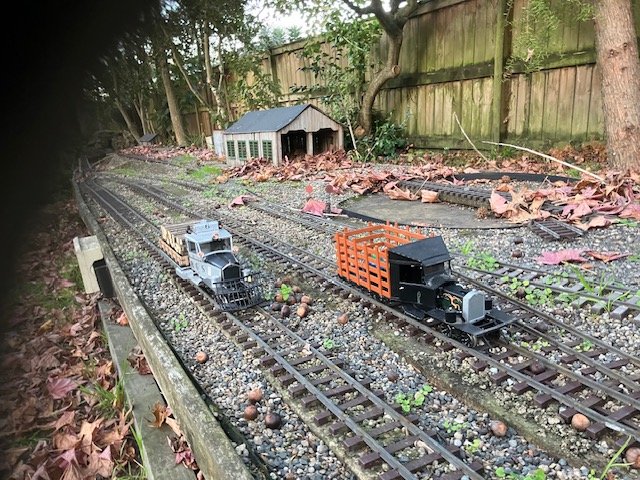-
Posts
4,892 -
Joined
-
Last visited
-
Days Won
119
Content Type
Profiles
Forums
Events
Gallery
Blogs
Community Map
Everything posted by Mayner
-

Heritage Railways in the Republic of Ireland
Mayner replied to Celtic_transport's topic in General Chat
In was estimated in 2001 that £ 10 million was required to establish the proposed National Transport Museum at Mullingar Station. https://www.irishtimes.com/news/preservation-is-train-of-thought-in-mullingar-1.334938 . Apparrently it was expected that Central Government & possibly EU would fully fund the project, the article speaks about the Muesum Group expecting to meet the Minister of Arts, Culture, Gaeltacht and the Islands to request £1 million in funding for immediate conservation work (urgent repairs). It looks like the museum was proposed by a local group which may not have given up on the hope of establishing a museum despite serious setbacks https://www.westmeathexaminer.ie/2014/03/19/dreams-of-a-rail-museum-in-mullingar-dealt-a-blow/ I wonder are the museum group still about or have considered other sources of fund raising? -
Looks very neat Alan and should be robust enough for exhibition use. I use a similar concept for aligning the traverser on a OO layout and turntables on my large scale garden railway using 1mm bore brass tube & 1mm brass wire (formed into an L shape) as the bolt/alignment pin. The brass sleeves are bored vertically (a tight fit) into the traverser deck and frame and soldered to rail web on the turntables which at this stage have stood up to 15 use with quite heavy locos, though I have to occasionally replace the odd pin. I was able to set the drawer runners on the traverser vertical having an 80mm baseboard depth.
-

Heritage Railways in the Republic of Ireland
Mayner replied to Celtic_transport's topic in General Chat
I guess the critical difference between preservation attempts in the Republic, England and New Zealand seems to have been an inability to raise sufficient funds to achieve their objectives or respond to challenges, another significant factor the limited ability of Local Government in the Republic to support the establishment/operation of heritage railway projects. While the majority of the 1st generation of preservation schemes in England and Wales funded the purchase of their lines from British Railways (KWVR, Bluebell, SVR, WLLR) through donations, bequests and borrowing, the often much longer 2nd Generation Schemes of the 70s & 80 (West Somerset, North Yorks Moors, East Lancs)leased their lines form Local/Regional Councils who also had powers to subsidise loss making public transport services following a change in legislation which required BR to give local councils 1st refusal to buy disused/closed lines. The outcome for Westrail and the GSRPS might have been different if Irish Councils had powers to acquire dissused/closed lines from CIE/IE or provide financial support when the main-line connections to Westrail and GSRPS Tuam and Mallow depots, Loughrea and Fenit Branch Lines were severed. The Festiniog and the Dart Valley more recently Dartmount Steam Railway are privately owned commerical operations as opposed to volunteer lead "Preservation Societies. The Festiniog owned and controlled by the Festiniog and Welsh Highland Railway Trust was originally bought from its original owners by Alan Peglar a wealthy enthusiast and businessman during the early 1950s, the Festiniog Railway Society exists to support the continued operation of the railway through membership, donations and volunteers. The Dart Valley Railway Limited is controlled by a group of prominent railway enthusiasts and business people (Ian Allen (Publisher) and William McAlpine (construction industry) once served as direstors, the Dartmouth and a number of other British heritage railways including Vale Of Rheidol owned by the Phyllis Rampton Trust 11¾miles and Brecon Mountain 5 miles are operated entirely by paid staff and do not use volunteers. The Festiniog & Welsh Highland is operated by a combination of paid staff and volunteers over a combined network of approx. 38½ miles 2' narrow gauge majority of trains are made up of modern (post 1960) stock and include a licensed Buffet Car. One of the main criticisms of volunteer lead preservation include the challenges of managing and co-ordinating a volunteer (where people 'want to do their own thing" compared to a paid workforce. One of the hallmarks of 'volunteer lead" heritage railways are collections of un and part restored locos and stock and part complete projects often owned by different individuals and groups of volunteers. The Welsh Highland Railway (64 Co) engaged a former ICI Chairman in an attempt to look creditable in its bid for access to the trackbed of The Welsh Highland Railway trackbed during the early 90s, at the time I was co-ordinating (from Scotland) the construction of a 3 Road Workshop/Engineering Base in Portmadoc using volunteer labour drawn mainly from the North of England and Home Counties, keeping in touch by regular volunteers by phone and the wider membership with our quarterly Journal. When we met our 'big name" was unable to grasp how I could manage the project in the manner of Waynes World "Book them and they will come"https://www.youtube.com/watch?v=NZN0A0U6ysg and went away shaking his head. At the end of the day we completed Workshop/Engineering Base without a hitch, a group of volunteer Steel Erectors arrived un-announced from Holycombe Museum in Hampshire the day before we were due to erect the steelwork allowing my crew to carry out a flying survey for the re-opening of Caernarfon-Dinas as a heritage railway. The Welsh Highland (64 Company)/Gwenedd County Council and the Festiniog Railway became involved in conflicting bids for control of the Welsh Highland Trackbed during the late 1980s wich lead to a 1993 Public Enquiry to assess whether re-opening the entire railway was (a) in the public interest and (b) which of the two parties should the order be made out to (ownership of trackbed). Although the Public Enquiry found in favour of the joint WHR/GCC application the Minister of Transport overturned the Inspectors decision and found in favour of the Festiniog bid. Mike Schumann a FR directors commitment to make a significant financial contribution towards the re-build (provided the FR bid was successful) was given as a significant factor in the Ministers decision in favour of the FR bid, our 'Big Name" quickly lost interest and resigned from the Board, at the end of the day the FR Trust had deeper pockets and there was nothing to be gained in trying to appeal the desision through the Courts. The Festiniog had previously successfully fought the Central Electricity Board in the second longest case in British legal history for the right to re-build its line into Blaenau Festiniog and for lost income after a section of (then out of use) line was flooded in connection with a hydro electricity scheme. The Severn Valley and Kent & East Sussex in their early days had to take on the Ministry of Transport incurring significant costs in order to re-open their lines. The Severn Valley re-opening was delayed as a result of the planned Bridgenorth Bypass which would have severed the line just South of Bridgenorth Station and required to fund the construction of a road overbridge estimated at £60K at the time in addition to the £25k required to buy the initial section of the line from British Railways. The re-opening of the KSER was delayed as a result of MOT objection to a number of level crossings over busy A Roads, MOT objection to a level crossing over the busy A21? London-Hastings road forced the Kser to abandon its main-line connection at Robertsbridge and re-open its line Westwards from Tenterden Kent the largest twon and intermediate station on the line. Level crossings protected by lightweight gates are a prominent feature at all stations on the re-opened heritage line. Wikipedia describes the preserved railway as having a 'tempestous history' with two financial crisis and disputes between volunteer group and their elected trustees. https://en.wikipedia.org/wiki/Kent_and_East_Sussex_Railway The saga of the Welsh Highland and Festiniog at times reads like a soap opera with internal and external struggles and a lot of 'politics' within both organisations, though both companies continue to operate from a small coastal town in North Wales the Festiniog essentially a narrow gauge mainline operation with a high proportion of passenger travelling the length of either line and coach tour passengers (one way) a significant source of traffic. The Welsh Highland Heritage (former 64 Co) focusing on families who want to occupy an hour or so with a short train ride, museum visit, book/souvineer shop and cafe. During the past 30 years with a membership of approx 1000 and approx 20 regular volunteers the railway built and established an accredited museum, improved its station buildings and facilities funded mainly by membership donations. On the motive power and rolling stock front completed an overhaul of its flagship locomotive Russell a 1906 Hunslet 2-6-2T (app. £150K), the 3050 owners group have funded the overhaul and re-boilering of Bagnall 0-4-2T loco Gelert the workhorse for scheduled steam services. A bequest following the 2003 death of a member is part funding the restoration of a WW1 Baldwin 4-6-0PT locomotive and the construction of a "Heritage Train" of coaches that ran on the orinal line before its closure during the 1930s. I guess the lesson for individuals or groups intending to establish a Heritage Railway Broad or Narrow Gauge in Ireland or anywhere elese is that deep determination and deep pockets are required in equal measures. At this stage I would endorse the comments about supporting existing preservation groups as opposed to trying to establish a new Broad Gauge Heritage railway in the Republic unless you have very deep pockets €5-10m, acquiring the necessary land, material and rolling stock and necessary permits to operate a railway. Any Broad Gauge operation would need to come to an agreement with RPSI, ITG or DCDR for the loan of locos or stock as IE has effectively disposed of anything suitable for use on a Heritage Railway. The DCDR "Sugar Puff' steam locos, ITG G 611 Class or possibly a Ruston are potentially the only suitable (economically) available locos for a short 1-2 mile line hauling 1-2 coaches. The DCDR spoke about using G Class in preference to their pair of E421s on account of lower running costs. A J15 or No 27 Lough Erne or a Small GM or a C Class only really economical with 4-5 coaches 5+mile trip. J15 184 and No 27 are both supposed to require major work possibly several €100K. Westrail apparently considered borrowing and overhauling No27 as a replacement for No90 on its Tuam-Athenry operations being capable of hauling a 4 coach train, but never got to a formal proposal stage with the RPSI when Westrail were over taken by events with IE closing the WLWR line to salvage track panels apparrently for re-use on the Ballina Branch, IE eventually re-opened Athenry-Claremorris for Ashai coal and oil traffic, but disconnected the Westrail depot when it closed Tuam as a block post. Going back to Harrys' question about plans to re-open Mullingar-Athlone as a heritage railway, I remember reading something in the local papers about a re-opening of the line being promoted by local groups under an EU Leader Scheme https://elard.eu/leader-clld/#:~:text=LEADER is a European programme,exists for almost 30 years.. may have been seen as a spin-off to the Mullingar Railway Museum project which appears to have been supported by CIE/IE, RPSI and ITG, even to the stage of getting David Jenkinson (famous LMS modeller and NRM Currator to prepare a report in favor of a museum but shot down by Mary Harney then Minister of Transport in an interview in which she basically said that she did not want a museum that would attract railway enthusiasts. (there must be a transcript somewhere? -
Gearbox slipping out of mesh despite using Studlock to secure the bevel gear to the axle. First thought was to pin the gear to the axle, but in the end used a 14BA brass screw as a stud! First job was to drill an 0.7mm hole through the gear and into the axle, then tap with a 14BA Tapered tap. Managed to break my sole surviving 0.7mm drill (on a Saturday), but sourced a replacement set of my most used sizes (0.55,0.7 and 1mm) from a local engineering and tool supplier during the week. Allowed 24hrs for Studlock to cure before trimming bolt flush with gear and re-assembling final drive. While no longer slipping out of mesh & RC receiver appears ok Railtruck is now running erratically, possbily a problem with the wiring between receiver and motor. Once I get this off the bench its back to completing the assembly of a J15 I started in 2017, but a reasonable chance of seeing it through this time.
-
Its close to 2 years since I had time to post/do anything with Northwharf, hopefully I should have more time for myself going forward with our family re-reunited following the wifes return from the States where she had been caring for her late father for the past two years. Managed to dust-off and carry out some maintenance/repairs to Northwharf including re-commissiong wireless (Radio & Infrared) DCC control including DCC control of points. I bought two Digitrax Empire Builder starter sets over 20 years ago the DB150 Command Station (the brain) one of the originals, the UR92 Radio/IR receiver from an upgrade (for use with the Garden Railway) about 15 years ago, the Amp meter (DCC compatible) from a kit bought from Tonys Trains (a DCC specialist)in Vermont purchased about 20 years ago, there is a digital circuit breaker (to protect the Command Station) again from Tonys on the shelf behind the Amp meter. The Command Station and UR92 interface with phone cable using RJ12 connectors. the 75Va transformer possibly Petes' of Parnell St housed in an Alti case still with its original quick blow fuse holder. The UR92 is powered by a separate Digitrax American plug top transformer that plugs into a 240-110v a/c convertor! Digitrax had an excellent repair service even if it involved returning components to Florida, but the DT400 Throttles of the 2000s are no longer supported. The #3 on this particular keypad no longer functions, although although all the other buttons on the pad still function. While loco speed can be selected by throttle knob or keypad, points and functions can only be selected by keypad. The DT402D is on Radio & IR powered by a PP3 battery unplugged from the UR92 and Command Station. Peco pointmotors on the layout are powered by Lenz LT110 Stationary Decoders also bought during the early 2000s. The LT110s receive their DCC signal via the Black and Red leads that power the track with the Brown & Orange leads powering the LC110s, I found that a separate power feed was necessary to power the LT110s as track power had insufficient power to reliably operate Peco twin coil point motors. Points are operated individually using the SW function on the Throttle rather than by a Lever Frame or Panel, in reality points in a goods/freight only terminal like Northwharf were likely to be hand operated rather than from a Cabin or Frame particularly in a post 1970s era layout. I this case the LT110 with its 4 outputs originally controlled points 1-3 with 4 spare, in the end I fed point 3 from output 4 being unable to select 3! on the throttle pad! The LT110 outputs are only selectable 1-4, 5-8, etc One of the main limitations of Northwharf is the Traverser effectively limits train length to a small loco and 4 wagons, though the Tower Building and Overbridge increases train length to 5 wagons which is not visually or operationally effective for me in 4mm/OO, one idea is to cut a slot in the shelving support on the right to provide a loco length fixed release road at the end of the traverser table. Another idea is to alter the tracklayout from a "Timesaver' format by replacing the loco release turnout with a crossover and extending the existing run-round loop into a siding serving a dry goods store creating separate destinations for Bulk Grain and Bagged traffic. Theoretically the head shunt serves an Oil/Tar Depot and warehousing (van traffic) Will probabably use a Maybach or a Small GM for workings to and from Northwharf with the G as yard shunter, although I fitted the G with a 'stay-alive" I had in stock it still stalls on the Peco Insulfrog points used in the yard, so have ordered a higher powered 'stay-alive' Hopefully I will get around failry soon to completeing the buildings and structures, the brick buildings were inspired by the distillery buildings at Grand Canal Dock, railway between a dock and retaining wall by the approach lines to North Wall Midland.
- 56 replies
-
- 10
-

-

-
I guess the significance is Ireland participating (for the first time?) in a joint European Defence operation as opposed to an Overseas deployment in an EU Peacekeeping mission. The Irish Defence Forces have a long (1958) and proud history of participating in UN and UN supported Peacekeeping Missions in Africa, Europe and the Middle East https://www.ireland.ie/en/un/newyork/peace-and-security/peacekeeping/#:~:text=Traditional peacekeeping&text=Our largest military deployment currently,positions at UNHQ%2C New York. Growing up in a Corporation Estate in Dublin in the 60s a neighbours son was wounded in action the Niemba Ambush in the Congo
-
I became fascinated in the 'double skinned" vans after I first saw one in Westport Goods yard while on holiday with my parents 50 years ago initially thinking it was one of the elusive LMA wagons, I later modified a Graham Farish N gauge van to resemble on of these wagons by overlaying the body with scribed plasticard, I also overlaid several Farish vans to H Vans by overlaying the sides with plasticard with microstrip strapping. I suspect that the double skinned vans may have remained in service longer that "Standard" IRCH vans, because they may have functioned as "Insulated Vans" suitable for meat, dairy or other perishible traffic, the double skin & cavity would have contributed to a more regular internal temperature than a single skinned van. Came across this specimen with framing and inner lining partially visible near Athlone in 96, I was working in the region at the time and spent several evenings 'hunting down' remaining grounded wooden bodied wagons.
-
These days I use dense foam sleeping bag underlay as underlay for flexible track. Track, pointwork and (loose Woodland scenics) ballast laid in a bed of PVA. Suprisingly good sound deadning qualities even on an all Ply (10mm) baseboard. The resilience/slight give in the track probabably improves running and power pick up. Interestingly running is quieter and smoother than on a layout I built about 20 years ago which used (expensive) Anita Decor foam underlay on a MDF baseboard surface, the loose ballast glued in place using the dilute PVA with a wetting agent in a eye dropper technique (which set like concrete!). Worst layout in terms of nosie transmission (but reliable running) track (partially handlaid) was glued to cork underlay glued to a baseboard formed in ply using Barry Norman techniques for some reason I used 6mm rather than 9mm ply a real sounding board, looked nice and ran reliably though and was even exhibited at Warley following a no of Irish exhibitions
-
I can supply the tin van and other etches to order from our supplier in the UK approx 4-6 weeks lead time. I'll post an update in the manufacturers section in a week or so.
-
Theoretically it should be feasible for the business or group that takes over Worsley Works to supply their existing Irish models using the photo engraving/etching business that Alan currently uses to produce the models. Basically it should be feasible to supply existing models at marginal cost (cost of etching the model + P&P) the tooling (Digital Photo tool) was a once off cost in producing the initial order. While in my experience repeat orders/sales of existing etched kits/scratchbuilder parts are miniscule, I still find it worth my while to supply etched kits direct to customers from a photo engraver in the UK.
-
Probabably a case for modellers interested in Worsley Works Irish 'Standard Gauge" models to form a group to open a discussion with Alan on the future availability of these Irish models when he retires. The Worsley Works etches are an important source of parts for modelling the Great Northern (I), NCC, UTA and NIR, I suspect that a high proportion of kits/etched parts were produced in response to enquiries from modellers in Ulster. MED, UTA 6-7, MPD, 70 Class , 450, GN/CIE AEC, GN 700 & 900 BUT. It may be worthwhile reaching out to Colm Flanagan or Kieran Lagan who comissioned Worsley Works to produce etches for UTA/NIR railcars and stock and regularly post on RM Web. Its possible that modellers and Clubs in Ulster may already be working to ensure their supply of Worsley Works parts. As a manufacturer of etched kits/parts I suspect demand at this stage for Worsley Works Irish "Standard Gauge" models is extremely low, best supplied to order direct from the photo-engravers, and would not be viable to supply from stock. Perhaps supply through a club or an IRRS London Area "syndicate" with a royalty payment to Alan on each sale!
-
CIE introduced a concept of operating more frequent short trains at higher speed (on the main lines) in the 1973 timetable, 001 Class hauled MK2D sets typically loading to a max of 5-6 coaches. Increased frequency was typically by adding an additional fast or non-stop return working daily with 'named' services on Dublin-Cork, Limerick and Waterford routes. CIE decreased service frequency, and resumed running longer slower trains as CIEs losses increased in response to the 1st Oil Crisis, CIE began speeding up services in 76-77 by using pairs of Bo Bo on fast heavy passenger trains before the introduction of 071s. Typically MK2D stock was used on more lightly loaded Up Morning-Down evening Diagrams, while pairs of Bo Bos hauled conventional stock on the more heavily loaded morning services from Dublin to the provinces. Intense TV marketing "The Great Train Robbery" of the new trains in the early 70s seems to have lead to a 10% increase in traffic, but the Governments introduction of free secondary education in the late 70s and the opening of the Regional Technical Collages in the 70s probabably lead to an increase in young people remaining in Ireland and taking the train to the city or colleage early on a Monday morning (Ballina Sunday) and returning home of Friday evenings. "Branch Line" trains were not exactly common in Ireland during the 60s-70s. Apart from Loughrea the last of the rural 'feeder branches" had closed following the 1963 closure of Ballaghadereen, Youghal was more secondary main-line with direct passenger services from Cork, seaside excursion trains could be quite long. Limerick-Ballybrophy was operated as a main line served by two daily return services daily until Ballybrophy was modelled in the 1980s. CIE withdrew the Ballina Branch Passenger train following the 1963 closure of the Burma-Road passenger service and diversion of the daily Limerick-Sligo train to Ballina. The Ballina-Limerick trains appear to have typically loaded to 2 coaches (Laminate or 51-53 Stock) 4w heating Van, 4W TPO. A through Ballina-Dublin passenger services was introduced in 1972? when a Ballina coach "Brake Standard" was attached to Mayo Line trains between Dublin and Claremorris and worked to an from its destination by the Claremorris Pilot loco a 001. Later a 1951-53 Brake Std and a Park Royal were fitted with Storage Heating for use on the Ballina Branch. While Cravens and Park Royals tended to be used on mainline or suburban services, currently apart from the Silver Fox 1951-3 Brake Second/Standard there does not appear to be a suitable rtr brake for someone modelling the 60s-80s era.
-
In the absence of instructions "Building Coaches the Comet Way" is an excellent guide to building ocaches using Worsley Works Parts. Building Coaches the Comet Way2.pdf
-
I finally acheived reasonably reliable running with E421 after around 15 years storage! I completed E421 using a Shapeways 3D printed body with etched n/s detail parts on a Bull-Ant Motor bogies supplied to 21mm gauge, I recently re-gauged the loco to OO for use on a small dockside shunting layout. Loco turned out very tempremental in operation would run momentarily before shutting down shorting the DCC system. Eventually traced the fault to a break in the insulation on the feed from the power pick up on one side of the decoder harness, where the edge of the flywheel had cut an nick in the insulation. Problem solved resolved by moving the pick up leads away from the edge of the flywheel. I need to replace damaged decals on both E421 & G617, fit window glazing and complete paint touch up E421 and look at the options for fitting working lighting. E421 is fitted with a TCS decoder with 'Stay Alive" bought many years ago. Now that I have a couple of shunting locos that are running reasonably reliably on of the next jobs is to try and restore wireless DCC operation of locos and points and re-install the Kadee uncoupling magnets to restore hands free operation. Although currently hand operated points are wired for DCC operation with using Lenz Stationary Decoders I bought about 20 years ago
- 392 replies
-
- 10
-

-
Info from P O'Cuimin Feb 1970 IRRS Journal Paper "Wagon SAtock of the MGWR Midland Hard Topped 1915 Covered Wagons for Guinness Traffic The MGWR predominentaly used Standard Covered (convertible) Wagons as opposed to Cattle Wagons to handle the heavy cattle traffic from the seasonal Fairs. The Midland listed 1646 Covered Goods & 635 Cattle Trucks in its 1910 rolling stock return. The 1924 return lists 459 Cattle Trucks ) no Covered Goods are listed in the 1920 & 1924. Although the Midland had a small (approx 400) fleet of covered Cattle Trucks, covered cattle wagons only became common on the Midland following the Amalgamation with the arrival of large numbers of ex-GSWR 14' Cattle Wagons (classed K) The MGWR continued to build its "Standard"7t -14' Covered Wagons with curving roofs up to the 1915 introduction of a 10t -9'6" ---16'8" (overheadstocks) covered wagon with continuous roof for Guinness Traffic. Released into service in 1916, Nos 19,46,112.127,235,286,302,332,448,492,561,579,812,839,899,936,945,966.988,1020,1-69,1173,1183,1409. These 'Guinness" wagons appear visually similar to to the outside framed vans used by the GNR(I) and SLNCR during the same era. The Midland had an earlier shorther curved roof version of the Guinness Wagon complete with large "Guinness" lettering on the side panels. I don't know whether the 1915 wagons carried similar lettering. Midland Hard Topped and Convertible IRCH pattern Wagons 1922-24. Between 1922 & 1924 300 1oT 10T-9'6" wb 16'11"(OHS) wagons were built to the IRCH specification-------------150 Open Centre. Height over rail of the open centre type 11'71/8 " same as the 1915 Guinness Wagons, Continuous roofed 11'5¼" 1922 batch:35,5587,131,279,809,838,859,884,980,1174,1186,1202,1211,1386,1388,1428,1482. 1923 batch 1,9,21,38,70,65,80,113,146,210,217,,217,217,533,609,620,636,707,806896,943,1091,1175,1412,1436,1473,1222,1737,1767,2110,2187,2288,,2430,2479,2535,2898,2909, and 3200-3350 1924 batch, 41,147,212,298,313,323,347,,363,398,401,,456,483,536,590,606,611,629,650,663,685,696,700,701,716,719,720,725,755,,762,779,,790,,880,891,905,908,917,927,944,951,953,959,961,990,992,993,994,1008,1031-33,1038,1058,1059,1188,1212,1726,1751,2037,2060,2095,2204,2296,2459,2664,2466,2468,2469,2471,2472,2480,2482,2488,2496,2499,2500,2403,2510,2526,2532,2533,2537,2543,2454. Models of IRCH vans My first attempt in 4mm was to scratch build the vans in plasticard about 30 years ago with scribed planking and Northwest Stripwood framing in 21mm gauge wusing SSM Wirons 'standard' Gibson EM/OO wheel sets with axles extended to 28mm by cutting and sleeving with 2mm brass tubing, models never progressed to the detail stage but look ok at a distance,I had a attempted to scratchbuild a MGWR 1875 Goods Brake during the same era with individually applied plasticard bolt and strapping detail on the timber framing. Jeremy Suter released a very nice whitemetal kits or the GNR/IRCH van, along with a MGWR "Open Box Wagon" and GNR & NCC Bread Container Wagons about 25 years ago but kits have not been repeated. I have a 'stash' of Leslies Provincial GNR IRCH Vans and Cattle Wagon kits, if I ever get round to assembling them!
-
The Chinese apparently see parralels between Trumps second Presidency with the turmoil of Mao's Cultural Revolution https://www.theguardian.com/commentisfree/2025/apr/14/china-donald-trump-mao-zedong.
-
Interestingly an early 1970s Railway Modeler article on layout by junior members of the Macclesfield Club opened my eyes to the potential of N gauge for main-line modelling in a scenic setting. The Macclesfield layout featured a quarry in served by a secondary 'trans-Pennine' line in a mountainous setting between two tunnel mouths, earlier the Modeler had featured a double track continuous line layout which featured a small station and a scenic section between two tunnel mouths on a 13'X2'6" baseboards made from two flush doors. Myself and another MRSI junior member developed the concept as teenagers in the mid 70s to a small station (& junction with a single track branch)set in the Pennines based on the "On from Holmfirth' layout plan/ concept published in the Modeler or Model Railways during the same era, using two surplus doors as baseboards. My scenic work was not great but at least attempted to model the moorlands above track level. Whatever about the ,imitations of our scenic modelling the double track continuous main line operated reliably and was a good showcase for what could be achieved running long main-line trains in a scenic setting within a relatively compact space. Unfortunately at the time there was little interest in N in the Club, 2mm finescale likely to be almost unheard of and the N gauge layout ceased to be used after a number of exhibition outings.
-
The rail reinstatement and the roading upgrades (Foynes-Rathkeale link road (dual carriageway) Rathkeale-Limerick upgrade to motorway standards) seems to be an EU Ten-T Regulatory requirement to upgrade Foynes to an EU "Core Corridor Port" https://sfpc.ie/limerick-to-foynes-road-networks/ . Basically an EU statutory requirement nothing to do with planned traffic flows.https://transport.ec.europa.eu/transport-themes/infrastructure-and-investment/trans-european-transport-network-ten-t_en Interestingly while Limerick-Shannon Port part funded the preliminary works (feasibility study-engineering design) and road improvements. the Irish Government appears to be fully funding the rail reinstatement works, so the Port haven't really any serious skin in the game if the rail link turns out to be a white elephant as JHB commented. Interestingly there is a Ten-T requirement that the Foynes terminal should be capable of accommodating 740m freight trains, whatever about the rest of the IE network. Going back to Wood Chips/Biomass probably cheaper to import from South America than Mill the wood chips in Ireland in a similar manner to former UK coal burning power stations importing wood chips (Sawmill waste) from Canada and rail it from Scotland to Yorkshire. Vaguely remember Cahirciveen power station burning locally grown biomass (larch?)about 50 years ago when converted from hand cut sod-peat to biomass. Very much a Gaeltacht make work scheme to reduce emigration/depopulation.
-
In the South the GSWR and DWWR/DSER transitioned to bullhead on main lines during the late 90s/early 1900s Other pre-amalgamation companies used FB. In the Baronial Lines of the MGWR Padraig O'Cuimin a recognised authority on the Midland wrote: "The branches (Loughrea & Balinrobe opened early 1890s) were originally laid with 79lb rails spiked to half-round sleepers, there being 1,940 per mile on the basis of straight track. Both lines were relaid in the tewenties with second-hand MGWR Main-line rails and most of the half round sleepers taken out" He wrote that the new rails included some 26' lengths but 23' rails predominated. Track was laid on a 12' wide ballsat bed 1'6" from railto formation level, the bottom level consisted of broken stone, ballast was originally gravel. There is some information on SLNCR tpw in Neill Spink's book based on the report of a 1906 derailment original 30' 60lb rail still in use originally laid on half round grooved sleepers although sleepers renewed at least onec. 11 sleepers per rail length held in position at every 4th sleeper by fang bolt withdog spikes at others. Inspector did not consider track strong but well maintained ballasted with'sandy gravel ..hardly any ballast at all" FB 84,90 & 95lb rail fixed to cast iron baseplates was basically the 'standard' PW used by CIE/IE on main and secondary routes laid with FB rail until replaced by cwr on concerte sleepers from the 1990s onwards. Photo from Kiltimagh on the Burma Rd
-
US Customs updates and publishes "Daily Foreign Currency Exchange Rate Multipliers" https://www.cbp.gov/trade/document/report/daily-foreign-currency-exchange-rate-multipliers which would apply on the date a shipment arrives in the US, not the date the customer paid for the order. I think safest option for US buyers is to wait and see what happens with the tariff situation during the next 3-6 months before ordering something, most of the high value IRM stuff is on a relatively long lead time and no firm delivery date for the Park Royal Coaches at this stage. Perhaps a facility for US customers to reserve a high value item like a loco or an IRC so they are potentially do not 'miss-out" and agree shipping options when the item is in stock. Although operating on a much smaller scale that IRM, I set up an option on my Shopify site for a range of shipping options including International Post, DHL delivery in place (customer pays duty and fees to DHL on arrival) or a DHL DTP (Duty & Tax paid) options. Shipping rates were largely determined by package size and weight, but feasible to use value as a determining factor. During the 3 years operation of the site I had 3-4 regular US customers who accounted for 15-20% of sales in terms of volume and value, with approx. 50 customers in the UK and Ireland with a high proportion of 'casuals" accounting for the remaining sales a much lower spend rate compared with the US. My American customers had a significantly higher individual spend rate than my UK and Irish customers, and by implication well worth looking after.
-
Interestingly the Irish Rail Freight Plan https://www.irishrail.ie/Admin/getmedia/685e9919-f012-4018-879b-06618bb536af/IE_Rail-Freight-2040-Strategy_Public_Final_20210715.pdf speaks about a new Container (Shipping) Service planned for Foynes initially targeting 2-6% of the Irish container market with 'aspirations to offer an alternative (compete with) Dublin. Possibly Chinese Belt & Roads intiiative with direct service from the Far East bye-passing British Ports? With an Irish Government committing over €100m to a rail link to the Port a €56m contracted awarded to Sisk and IE recently entering a 10 year agreement to purchase 400 wagonn the IE Railfreight Plan doesn'nt appear to be a flash in the pan. The regional Terminal proposals are consistent with current international best practice in particular operating rail terminals in industrial areas in colloboration with logistics business/road haulage operators makes perfect sense. Quite a change from 20 odd years ago when IE was forced to cancel an order for replacement container flats and bulk cement wagons because the Irish Government was unwilling to underwrite IE investment. Ten years ago there ware vague proposals to establish an Inland rail served port at Ruakura near Hamilton, negotions with potential tenants and port companies remained confidential until after contracts were signed, in 10 yeaars the area has been transformed from farmland to a major road-rail hub with warehousing complexes operated by Logistics Companies, a National Retail chain and some manufacture, freight is imported and exported by rail, collected and distributed by road at a regional level.
-
I suspect the wagon in the photo may be an ex-GSWR/GSR 15147-16812 series van being refurbished with a sheet aluminium skin over planking or possibly a 1946 17012-17211 being assembled. I suspect CIE used sheet aluminium cladding over softwood planking rather than a plywood substrate when refurbing ex-GSWR/GSR vans and assembling the 1946 vans, planking is just about visible in the iterior of the van in the photo. Its possible that the flat diagonal strapping was not fixed in place until the final stages of the assembly of the van, the diagonal strapping was actually fitted over the vertical flanges (flat part) of the T angle and would have had to be been botted in place after the planking was fitted to act effectively as a brace. Simulilarily the holes for the end vents and covers fitted after the planking was complete and possibly roof fitted to have sufficient rigidity. I checked out a grounded what I thought was a H Van in a field out side Kinnegad about 25 years ago and was surprised to find that the body was clad in sheet aluminium over a planked interior possibly a rebuild of an ex-GSWR or GSR van. Alan O"Rourkes's Nov 2002 New Irish Lines on CIE Covered Goods Vans indicates that the GSR continued to build the GSWR design of van between 1938-1940 (16446-16470) Aug-Sep 1938, (16491-16554), (16577-16598) (16612,16641) 1939 and (16642-16685),(16708-16777) (16779)(16783)(167786-16796)(16798-802)(16804-9) and 16811. GSR was clearly gearing up for shortages of the Emergency in 1940 leading to an increase in traffic & profitability. The GSR also built some outside framed IRCH wagons during the 1930s similar to those used on the GNR possibly in response to increased Duties on steel during the Economic War, the GSR also appear to have built wooden framed Beet Wagons usring the Economic War. Interestingly the final member of the 15147-16812 series vans had a Light Metal Alloy body with corrugated ends apparrently identical to the 17213-17221 LMA wagons of 1952, possibly a rebuild or replacement of an existing wagon as it had a 10' WB chassis with open W irons as opposed to the 9'6" WB underframe with solid W Irons used on the ex GSWR Vans. I first came across the grounded body of 16812 in use as a store on a construction site in Castleknock about 40 years ago and eventually built models of LMA wagons in N & OO and eventually produced a 3D printed version. CIE may have purchased pre-formed aluminium alloy body and roof panels from a British manufacturer for these wagon in a similar manner to GN pruchasing pressed steel ends & parts for its Bagged Cement wagons and CIEs later used of pressed steel parts in its 1960s Pallet Wagons.
-
Railtruck appeared to run ok when tested under poweron the work bench, the transmission started giving trouble when test run on the railway after I installed the Radio receiver and completed the electrics. For some un-known reason I had to reverse the truck before it would run forwards and initially it was unclear whether the problem was with the gearbox or the gears in the rear axle. In the end I found that the plastic worm gear in the gearbox was damaged (the motor may have jumped out of mesh, fortunately I had brought a couple of spare gear sets! Fortunately it was fairly easy totap & slide the shaft (splines at one end) out of position and replace the worm & 1st stage of the reduction gearing. This time I test ran the Railtruck on the bench and layout before replacing the interior and cab. The motor is locked in position by the model engine! The motor runs nicely in the forward direction, but there is a lot of end movement of the shaft and worm when running in reverse & no real cure unless I place packing washers between the worm and motor bearing wiich wouldd require the removal and replacement of the worm, the working radiator fan is a nice detail but not really visible when the Railtruck is running even if the bonnet sides are raised. Had about 1/2 hour test running before replacing the cab, this particular area is more or less in full shade at thie time of year and engulfed by a carpet of moss, which dies off in spring and summer. Motor #1 passes #6 first time I had time to run anything on the railway since February. I have got to repair and refix the pilot (cowcatcher) similar to #6 and fabricate a load to cover disguise and weather proof the electrics, then hopefully work on some small scale stuff maybe finally finish a pair of SSM J15s started several years ago
-
I suppose the $20million question is whether The US Custom Service and US Postal Service are geared up (have the resources) to collect the newly introduced tarriffs and the ability to respond to respond to potentially rapidly changing tariff rates. While EU custom and postal services had several years to prepare (investment in automation) for changes in Global Customs Declaration Requirements & EU Vat Harmonisition, a lot of frustration was expressed on this Board as a result of 'teething problem" with An Post's systems and people having to pay Vat on imports from outside the EU. Although increased tarriff on imports was one of Donald Trumps significant campaign strategies, it appears highly unlikely that Customs or the Postal Service wpuld have been able to justify gearing up to collect the new Tariffs without Presidential approval. From my own experience as an exporter the cheapest option using a Postal Service or a Courier like DHL was for the customer to pay the import tax/duty and customs clearance upon arrival, DDTP with a carrier like DHL or Fed-Ex was a significantly more expensive option. The other issue with shipping to the United States is that DHL uses a 'local partner" usually USPS for delivery in the United States which in my experience can result in unpredictable delivery. I shipped an important document from New Zealand to the United States in January, while DHL managed to complete the international element of the shipping (Auckland-LA-Minnespolis) within 3 days it took a further 5 days for the USPS to deliver the document the remaining 195 miles to its destination. There was also the little matter of the USPS delivering the document to the local Post Office than the actual delivery address. I guess the only way to find out how long the customs clearance process will actually take and work out the most cost effective shipment option is for one of our US based forum members to place an order with Accurascale.
-
Work actually started on the new North Wall running shed in the area now occupied by the wagon repair workshop in the area between the sidings that lead to the Alexandra Road Tramway and the Main-Line from the Granneries Signal Cabin to the Point Depot. The North Wall would have made sence for a modern running shed to replace Broadstone, and would have reduced in a significant reduction in operating expenses (eliminating light engine movements and the expense of hauling coal from the North Wall to Broadstone & freeing up space in Broadstone for CIE Road Service repair and maintenance. It looks like the new shed was intended to be in pre-cast concrete, no doubt standard components supplied by the Inchacore pre-cast plant. A number of photos exist from the early 50s after the works were adapted showing lines of standing precast columns erected in the interior of the proposed shed and precast components stored on site. Clonmel apparrently one of the first GSWR pre-cats concrete loco sheds Judging by the 1949 planning/start date a Milne Report recommendation made un-necessary by CIEs decision to dieselise in the early 50s Probabably worth a search through the IRRS Flickr collection.
.png.c363cdf5c3fb7955cd92a55eb6dbbae0.png)





